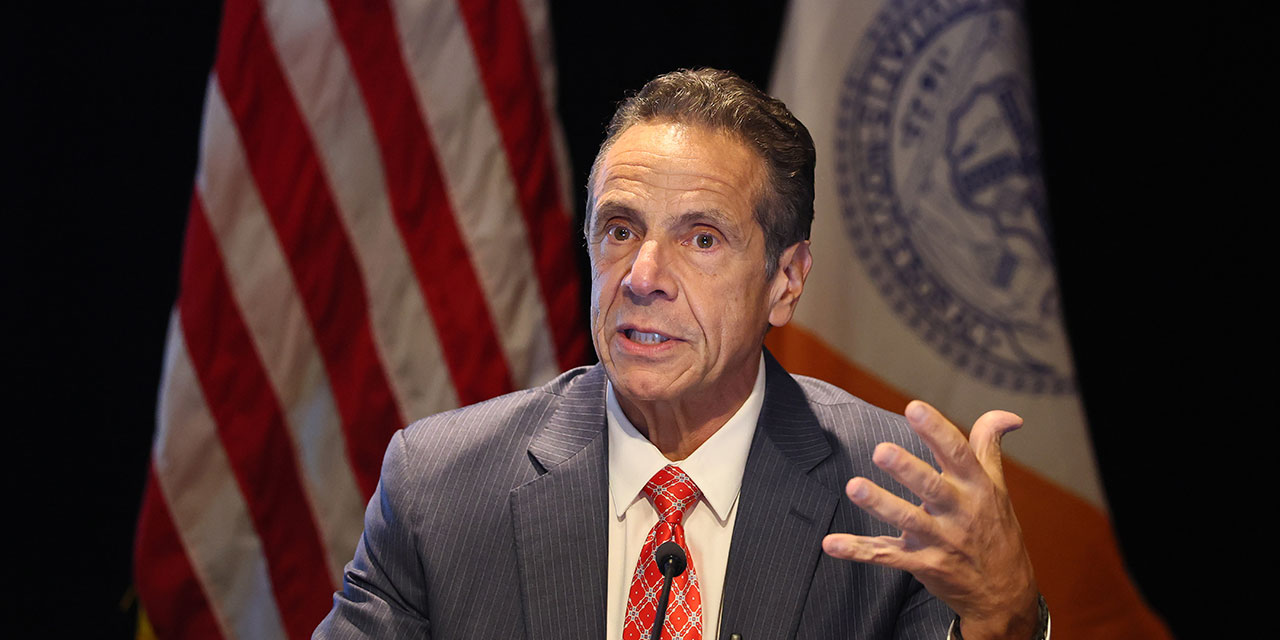
Former governor Andrew Cuomo, whose independent run against Democratic mayoral candidate Zohran Mamdani is stagnant in the polls, is trying something different: being cool on social media. Two weekends ago, he attacked Mamdani over the latter’s rent-regulated, $2,300-a-month Queens apartment and followed up with a proposal for a “Zohran’s Law” to keep “the rich” out of regulated housing.
The ploy isn’t likely to work. The jab makes him look rhetorically desperate, and the policy idea is not only contrary to Cuomo’s record as governor but also potentially damaging to New York’s rent-regulated property owners.
Finally, a reason to check your email.
Sign up for our free newsletter today.
On X, Cuomo tried his hand at a heartfelt rant. “Somewhere last night in New York City, a single mother and her children slept at a homeless shelter because you, assemblyman @ZohranKMamdani are occupying her rent controlled apartment,” he (or his campaign) wrote. “You grew up rich and married an even wealthier woman. . . . You make $142,000 a year plus stipends, and your wife works too, meaning you together likely make well over $200,000. . . . You are actually very rich. Yet you and your wife pay $2,300 a month, as you have bragged, for a nice apartment in Astoria. That should be housing for someone who needs it.”
The Cuomo campaign soon complemented this screed with a proposal for income limits for vacant rent-regulated apartments. For new tenants, rent would have to eat up at least 30 percent of their income. In the example the campaign used, for an apartment renting for $2,500 monthly, tenant annual income could not exceed $100,000.
Both the screed and the policy are thin stuff. Cuomo, once so politically astute, doesn’t realize that attacking Mamdani personally didn’t work in the primary election and is unlikely to succeed now. Rent regulation, moreover, was never intended as an anti-homelessness program, as his X post seems to imply. In Cuomo’s own proposal, for example, the person taking over Mamdani’s apartment could earn up to $92,000—hardly the profile of someone living in a homeless shelter.
Cuomo’s policy proposal is also bizarre. Economists generally say it’s a good idea for a city to have enough housing stock so that most tenants must spend only 30 percent of their income on rent. To decree that prospective tenants of rent-regulated apartments must find a unit that they can barely afford is upside-down economics. Moreover, the proposal only serves to remind voters of Cuomo’s political flexibility-cum-incoherence.
It’s not that he’s wrong to think that the city should loosen the laws governing its nearly 1 million rent-stabilized apartment units, which account for 27 percent of the city’s housing stock and 41 percent of rental units. Rent-regulated units are, on average, cheaper than market-rate rentals—the average rent for an occupied regulated apartment in 2023 was $1,500, compared with $2,000 for an occupied market-rate unit. But this relative cheapness comes with costs. About 9 percent of regulated buildings are distressed, meaning the landlord’s income fails to meet expenses. Rent regulation discourages property owners from investing adequately in their buildings and encourages tenants to stay too long in apartments that are larger than they need. And many rent-regulated tenants aren’t acutely in need of government protection: 30 percent of rent-regulated households earned $100,000 or more annually in 2023.
So some sort of deregulation of vacant units makes sense. But the mayor has little control over this process: it’s the state that sets the city’s rent laws. And as it happens, New York had deregulation for units rented by higher-income tenants, as well as vacancy deregulation for more expensive apartments. For nearly 30 years—going back to the Mario Cuomo administration—once vacant apartments reached a certain monthly threshold, they exited the city’s rent-regulation system and rented for market prices. Tenants earning more than $200,000 annually, too, lost rent protection once their rent crossed a $2,500 threshold. But then, in 2019, Governor Andrew Cuomo, fearful of the ascendant Left, ended both vacancy and high-income decontrol.
The policies that Cuomo killed were superior to what he is proposing now, which would limit the pool of potential tenants to whom landlords can choose to rent a vacant rent-regulated unit. Property owners who can’t set their own asking rent and who can’t easily evict tenants can at least choose a tenant they think will consistently pay the rent. In other words, rent regulation is a bad idea, but if we’re going to keep it, building owners benefit from being able to rent to tenants earning into the six figures, including those whose rent consumes 30 percent or less of their income. A property owner actually wants a tenant like Mamdani—to hedge against tenants who don’t pay the rent on time.
Cuomo’s Zohran’s Law is emblematic of this election season. Mamdani propelled himself into the lead and stayed there via simplistic ideas like a rent freeze on regulated units, which would further harm distressed landlords as inflation bites. To counteract him, Cuomo has come up with a bad idea of his own. Voters must now pick between the simple dumb idea and the convoluted dumb idea—hardly a compelling choice.
Photo by Michael M. Santiago/Getty Images
City Journal is a publication of the Manhattan Institute for Policy Research (MI), a leading free-market think tank. Are you interested in supporting the magazine? As a 501(c)(3) nonprofit, donations in support of MI and City Journal are fully tax-deductible as provided by law (EIN #13-2912529).
Source link

















